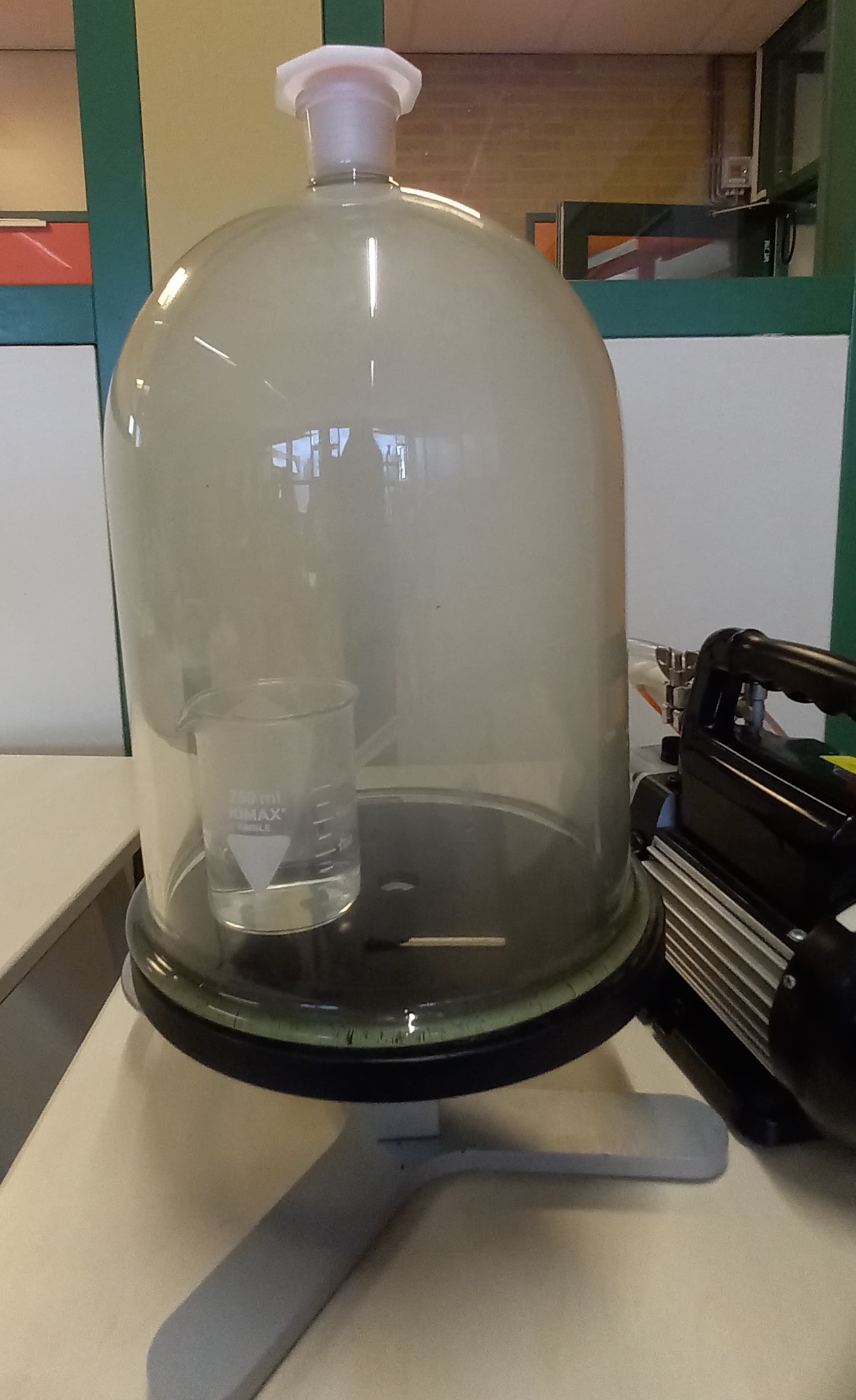20.7. Cloud formation#
| Author: | Norbert van Veen |
| Time: | 10 minutes |
| Age group: | 12 - 18 |
| Concepts: | Clouds, evaporation, condensation |
Introduction#
Clouds captivate children’s imagination. On a beautiful day, or when looking down from an airplane they resemble cushions. Often, students do not know how they form. This demonstration quickly and clearly illustrates aspects of cloud formation. The demonstration is well-linked to the topic meteorology.
Equipment#
Vacuum pump connected to bell jar
Beaker with hot water
Box of matches
Towel (to remove condensation from the bell jar after the demonstration)
Preparation#
Set the bell jar and vacuum pump on a table clearly visible to all students. Heat some water in a beaker or use hot tap water, ensuring it’s not too hot (between 50°C and 70°C).

Fig. 20.18 Vacuum bell jar, pump, match, and beaker with hot water#
Procedure#
Place a beaker of hot water under the bell jar. Strike a match and when it goes out, ensure that the smoke ends up under the bell jar by placing the jar over the match.
Start the vacuum pump. The water will start to evaporate. Optionally, you can place a thermometer or temperature sensor under the jar to demonstrate that evaporation extracts energy from the liquid, thus lowering the water temperature.
Clouds form under the jar at a certain air pressure. The jar is no longer transparent.
Would clouds form if you hadn’t used the match?
Yes, there would be more cloud formation
Yes, but less than now
No, there would be no cloud formation
It makes no difference
A question to assess students’ understanding: In what practical situations does this type of cloud formation occur?
Physics background#
Due to the low pressure, the water in the beaker evaporates faster, causing the temperature in the beaker to drop. A lot of water vapor enters the bell jar. At a certain air pressure, water vapor condenses on the present smoke particles.
At high altitudes, the air pressure is also lower, allowing water vapor to condense on suitable condensation nuclei, such as particles emitted by an airplane engine. Because the water droplets in the cloud scatter sunlight of all colors equally, clouds appear white.
There are variations of this experiment, where a soda bottle with some alcohol or water drops in it is pressurized using, for example, a bicycle pump. The pressure is then rapidly decreased (by releasing the cap), after which a cloud becomes visible.
Tip
Search for ‘Cloud Bottle’ for a student version of this experiment.
See as well our demo Boiling Without Heating in a Vacuum and Light in darkness.
